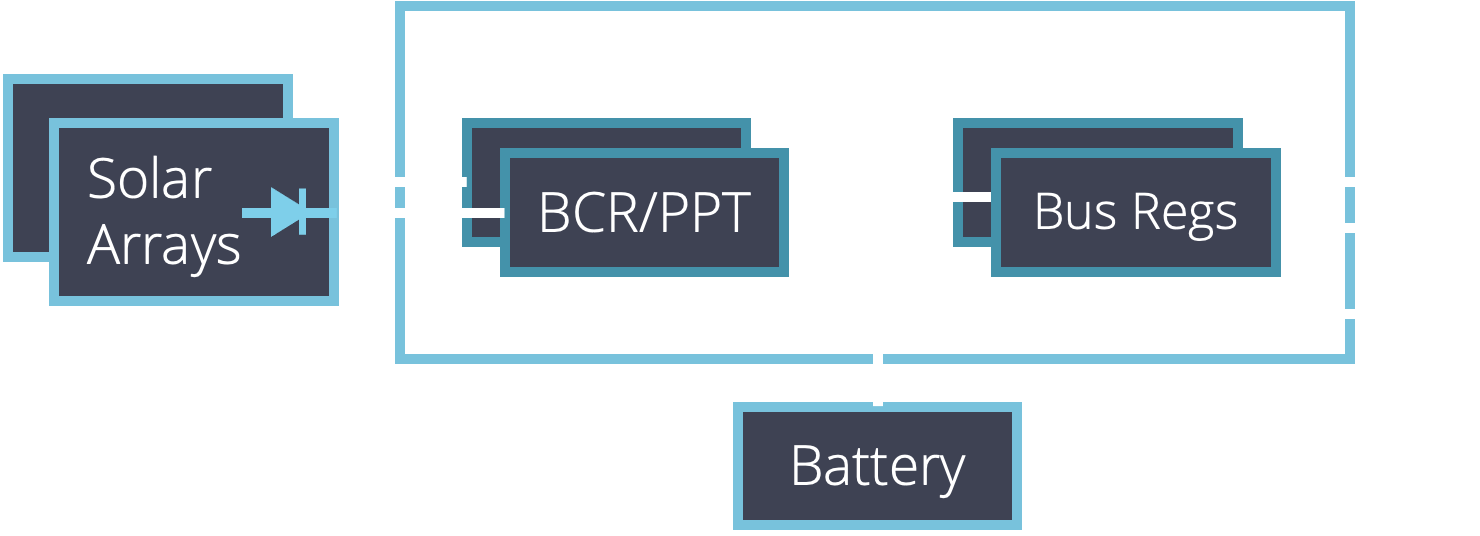Power Module
The Power Module simulates the operation of the core elements of your satellite power architecture: solar array power generation, battery energy storage, electrical power system (EPS) power processing/control, and subsystem/Component loads.
This Module owns the modeling and simulation of the following elements of the spacecraft digital twin:
Power Processing#
The power processor is the heart of the spacecraft EPS - regulating solar array power generation and battery charging while simultaneously providing various regulated and unregulated buses to power all spacecraft loads. How the power processor carries out these functions depends on its topology. Sedaro Satellite currently supports five of the most common power controller topologies ranging from various MPPT to DET configuration. The power processor also allows for the definition of regulated buses. These buses are defined via the creation of bus regulators. The power processor exhibits dissipation composed of the losses from its various power converters and diodes. These dissipations are captured for thermal modeling and analytics.

Example Sedaro Satellite EPS Architecture
Power Generation#
Solar cells make up solar panels which ultimately compose solar arrays. Solar panels are associated to surfaces which can either be fixed in the spacecraft body-frame or sun-tracking. Each solar array is connected to a dedicated solar array input on the spacecraft's power processor and will be independently peak power tracked in the cases where the controller topology supports it.
Energy Storage#
Battery cells make up battery packs which ultimately compose the spacecraft's battery. The battery connects to the power processor and is charged and discharged as necessary given the available solar power and subsystem loading. Battery packs exhibit a dissipation while charging/discharging which is captured for thermal modeling and analytics.
Subsystem Loading#
Each subsystem contains components - each of which can have a defined electrical loading. The loading of a Component is defined using loads and load states. A load captures its association to a spacecraft power bus (regulator or unregulated) and defines the loading it contributes to that bus. Load states associate loads to Operational Modes. A load state is active and its loads are powered when the spacecraft is in one of its associated Operational Modes (the "active op mode").
Solar panels, battery packs, and the power processor are all considered components as well and can therefore be assigned load states and loads (i.e., battery heaters, protection circuitry, etc). They can also all be imported from the COTS library. Battery packs are imported with their respective cell, as are solar panels, and power processors are imported with their bus regulators.